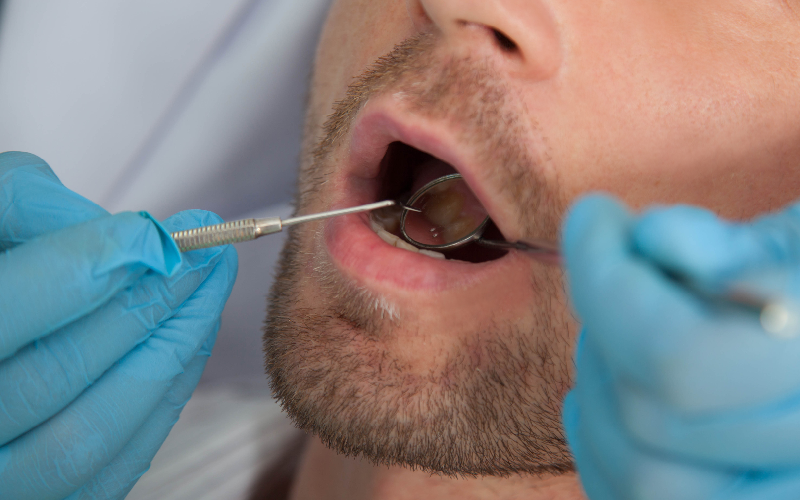
Primary Dental Care During COVID-19 and Future Airborne Pandemics
News
Jul 4, 2022
By Hyewon Lee & WFPHA Oral Health Working Group Members
Oral health is an integral part of primary care. While oral diseases pose a major health and financial burden globally, oral health is widely neglected and considered as optional or specialty care. Recognizing the global public health importance of major oral disease, the World Health Assembly adopted resolution WHA74.5 on oral health in 2021 and stated oral health is an integral part of the health and healthcare system.
COVID-19 has infected almost 400 million people around the world with 6 million deaths, changing the pattern of daily lives and the healthcare system. Oral health practitioners are among the most at risk professionals for COVID-19 and other airborne diseases. In view of the discordance in the guidelines for dental practice since the outbreak of the COVID-19 pandemic, the WFPHA Oral Health Working Group (OHWG) recognizes the need for clear guidelines on dental care delivery during the COVID-19 pandemic and future outbreaks of airborne diseases, and a consistent definition of primary dental care. Therefore, 24 public health focused dental professionals from 13 countries collaborated to publish a resolution entitled Urgent, Essential and Primary Dental Care during COVID-19 and Future Airborne Pandemics, which represented various WHO regions. The resolution presents core elements for the safe delivery of dental care during pandemics and a working definition of urgent, essential, and primary oral health care. This resolution was accepted and approved by the WFPHA General Council in May 2022. The WFPHA OHWG calls to action to provide coordinated oral health during pandemics to promote and improve oral health and overall health for all and recommend the following:
- Strategic planning and communication: All oral health care programs should have a clear plan, process, and communication strategy to screen or identify confirmed cases and related exposures, based on national and regional guidelines. Oral health care personnel should be considered as an essential part of the greater public health team and undertake activities to support public health at all times, including during pandemics.
- Personal protective equipment (PPE) and facility design: All healthcare facility personnel should wear well-fitting surgical face masks to cover a person’s mouth and nose to prevent spread of respiratory droplets. Practitioners and care staff should use face masks or other respirators approved by national guidelines.
- Urgent dental care: Urgent dental care includes medically necessary care which addresses acute oral health infection, severe pain not controllable with analgesia, and care involving dental/orofacial trauma. Urgent care and associated diagnostic examinations should be provided for all patients. AGPs should be avoided or minimized whenever possible, and atraumatic restorative treatments (ART) using hand instruments should be prioritized.
- Essential dental care: In 2021, the WHO defined essential dental care as fluoride toothpaste, glass ionomer cement, and silver diamine fluoride. ART, such as glass ionomer cement, and silver diamine fluoride, can be delivered with minimal or no involvement of AGP, and is also listed as basic dental packages by the World Dental Federation. Essential dental care, including fluoride application, should be provided for all patients, including patients with confirmed infection if it falls under urgent care.
- Primary dental care: Primary dental care includes routine dental exam, cleaning, radiographs, permanent restorations, periodontal treatment, endodontic treatment in addition to urgent and essential dental care. Providing primary dental care for all patients with minimal risks during the pandemic is recommended and only urgent and essential dental care on an emergency basis for patients with COVID-19 and other highly infectious airborne diseases should be provided. When urgent, essential, or primary dental care needs AGPs for patients with minimal risks, use mitigation methods, such as four-handed dentistry, high evacuation suction, and isolation devices to minimize droplets and aerosols. Providers can consider oral antiseptic rinse based on scientific evidence.
- Oral hygiene for hospitalized patients and those living in long-term care facilities: The oral health of hospitalized patients and those living in long-term care facilities should be maintained throughout pandemics. Optimal oral hygiene practices should be performed daily with help from nurses or caregivers.
- Oral health care and education for mothers, children, and caretakers of people with special needs: Oral health needs to be integrated into primary and prenatal care for these populations, focusing on prevention of dental caries, home oral hygiene practice, and low-cariogenic diet. Oral health education for mothers can set life-long healthy habits and diets for young children. Oral health education, especially for expecting mothers, children, and people with disabilities and their caretakers should be provided.
We recommend that oral health care should continue in this challenging time as an integral part of primary care, and dental care should be integrated into a larger health system, such as primary health care, perinatal health care, long-term facilities and schools, and nutrition.
The WFPHA OHWG is open for collaboration with both dental and non-dental health organizations for this goal. Please reach out to the Chair of the OHWG, Dr Hyewon Lee, at hyewon@idasociety.org
